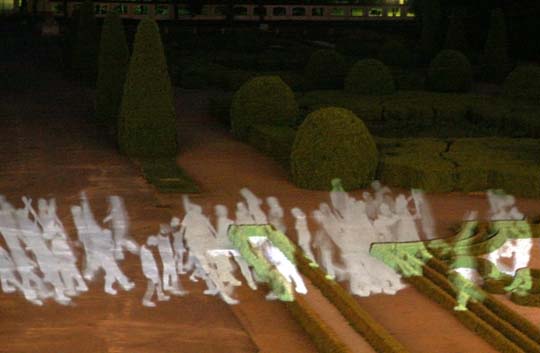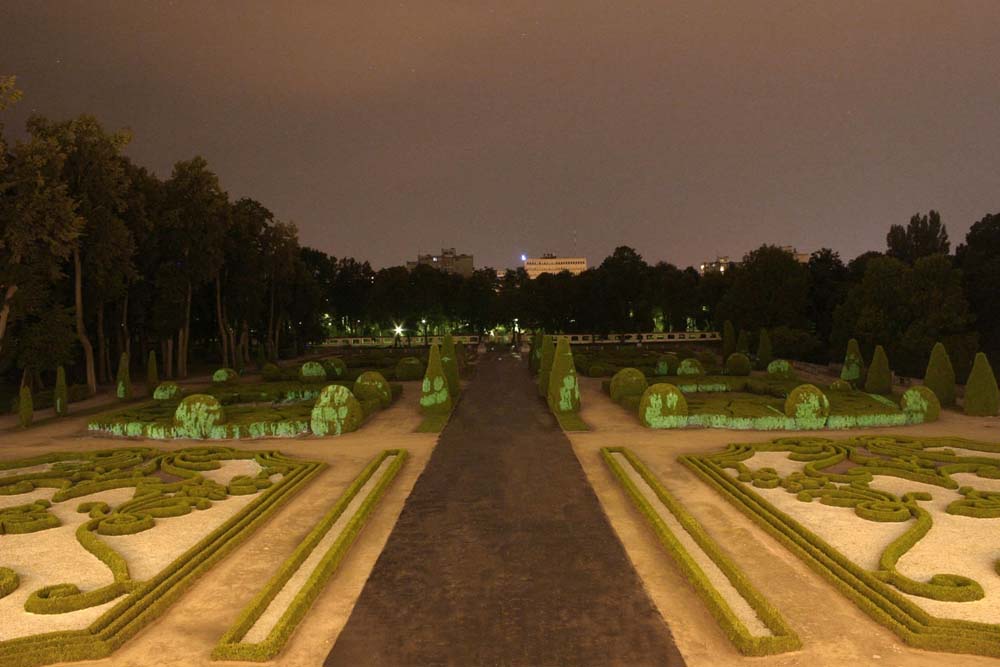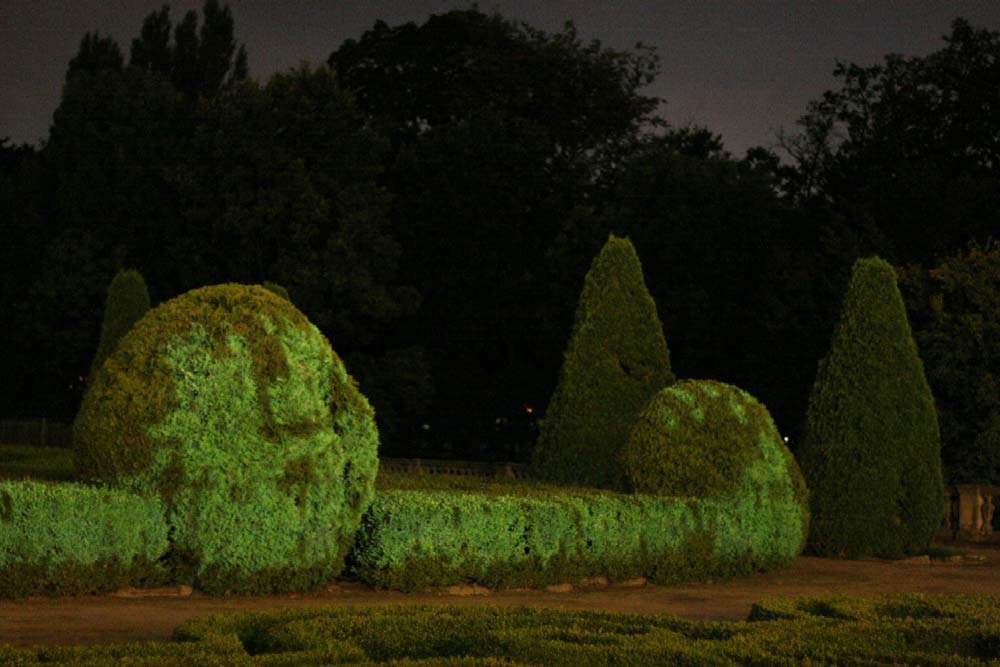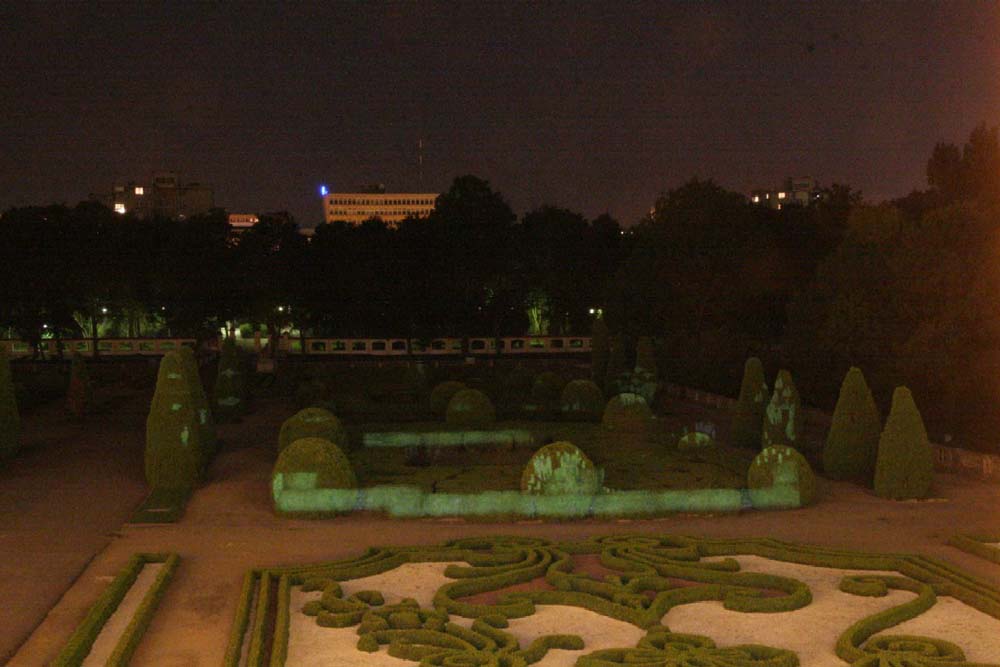DOMINIK LEJMAN – Gardens
Dominik Lejman was born in 1969. He is a graduate of the Academy of Fine Arts in Gdańsk and the Royal College of Art in London. He lives and works in Gdynia and Poznań, where he runs a Painting Studio at the Academy of Fine Arts.
Among his achievements are the following individual exhibitions: ‘The Luxury of Survival’ (Centre for Contemporary Art Zamek Ujazdowski, Warsaw 2000), ‘Last One Turns The Light On’ (Centre for Contemporary Art, Zamek Ujazdowski 2006), ‘Natural History’ (Atlas Sztuki in Lódź, 2007). His joint project with architect Jacek Dominiczak was presented at the Architecture Biennale in Venice (2004), as well as his paintings were exhibited in many group exhibitions like ‘After the Wall’ in Stockholm’s Moderna Museet or ‘Painting as Presence’ in Kunstlerhaus Bethanien (2006).
He is the recipient of a number of Polish and foreign awards : Passport of Polityka in 2001, Culture Award of the President of Gdynia, Kościuszko Foundation Scholarship for Location1 residency in New York, or recently a Honorary Mention at the Castellon Painting Prize in Spain.
In 2003, he realized an original artistic sight-specific project in Bialystok’s Children Clinical Hospital: ‘Hospital as a landscape for the little performances’ which was held in cooperation of the Arsenal Gallery (video frescoes with projections animals which ‘inhabited’ the architecture of the hospital interiors).
The Arsenal Gallery is proud to present a selection of the artist’s works under a common title ‘Gardens’. The exhibition idea was conceived on the basis of the Arsenal Gallery’s location, situated right alongside the gardens of the Branicki Palace. The exhibition comprises two venues: the first one is located in the Gallery where paintings are integrated with video projections alluding to the theme of the garden, and the second – the Branicki’s Gardens with another video projection. The integration of a still, painterly surface with the motion picture of the projection is characteristic of Lejman’s work and combines the two exhibitions into an impressive single presentation.
In his works, Dominik Lejman experiments with the language of the video by paying more and more attention to the ways in which the audience can blend with the work of art in a direct contact with the transmission of the video picture.
The time of the picture / space of the picture; time of a gaze / time of motion – these are key terms in Lejman’s work. Yet we will also find here the analysis of the observer function, which stems from the philosophy of G. Deleuze, and the investigation of that which is outside and inside the work, duplicity, reflection, frame, still and motion picture, identity of the painting, as well as the role of social and individual body stemming from it. The way in which the ‘transmission’ modifies our perception of the body and the relations between the individual and the group body reflects the attitude the artist assumes towards the public and urban space (‘Web-lilies. Colour approximation – 400 webpages’).
The observer experiencing Lejman’s works becomes their integral part, and, at the same time, triggers the ‘representation’. ‘Media frottage’ – a video mural in Künstlerhaus Bethanien, 2006, ‘Skaters’ – a video mural in Poznan’s Old Slaughterhouse, 2005, ‘The Breathing Cathedral’ – a video projection – mural on the vaults of St. John’s cathedral in Gdansk, 2005, ‘Statistical Ceiling’ – a photo-wallpaper at the Prague Biennale in 2003, ‘Present Perfect’ – installation in Dusseldorf’s IP, 2005 and ‘con/sequenze’ a sight-specific installation in the park of Villa Cellimontana in Rome, 2004 – become ‘scenic space’ of such representations. The artist subjects the space to the test of the newest visual technologies and transforms it, until he can finally capture the essence of the image from it. As Jacques Rancière wrote in ‘Le destin des image’, one has to see without being seen, see oneself directly or in distortion, see oneself as the other.
Lejman’s works, just like the artists who’s works were most influencial to his art like Dan Graham or Bruce Nauman, force the viewer to constantly re-focalize (turn attention towards the inside), to subject and regulate the senses. It is all about finding the right distance, good point of reference and the right perspective.
The analogy to the notion time: present, continuous and past, situates the artist in the middle of a social game. The ‘Le Notre’-style garden which served as the backdrop for aristocratic trysts becomes a reflection, but at the same time reflects (like a negative) the contemporary order of the systematized, unified, technicalized society (‘Web-lilies 2007’).
Gardens are, due to their nature, separated and exclusive. As a space between nature and culture, they are a metaphor of the human condition. Everything depends on the cyclic passing of time, the biological time and the historic time. One characteristic feature of the French garden is the bilateral symmetry in relation to the main alley which runs through the middle of the garden. The trees and bushes are neatly trimmed and formed. The French-style garden is notable because of its systematization. There is no place for improvisations and diversions. The hedges and alleys are an ideal translation of the garden perspective in which the human being is to have his/her place and observe the world from a point, along an axis.
The classic architecture of the Branicki Palace garden in Lejman’s work finds its reflection in the postmodern category of crowd. The twentieth century was a time when the masses entered politics. Active, organized masses were of course manipulated (‘The New York Marathon’). Masses of silent people who, as Canetti point it out, are herd animals who never wanted to be alone. Our history is recalled through the fragments of films by Leni Riefenstahl and Sergei Eisenstein which Lejman employs as projections in the works presented in the Arsenal Gallery (‘Cinematic Dandelions’).
The question that arises is the one about the role of the garden in contemporary world and our place within the garden. Does an individual entering a garden become Hannah Arendt’s ‘zoon politikon’? Is the interpersonal space (essentially existing outside the human) a public space and, therefore, political? If so, is there a place for a garden in such a world? If so, for what style of a garden?
Dominik Lejman tries to answer these questions, inviting us to an investigation in the dark twists and turns of the Branicki Palace gardens.
Malgorzata Grygielewicz
Dominik Lejman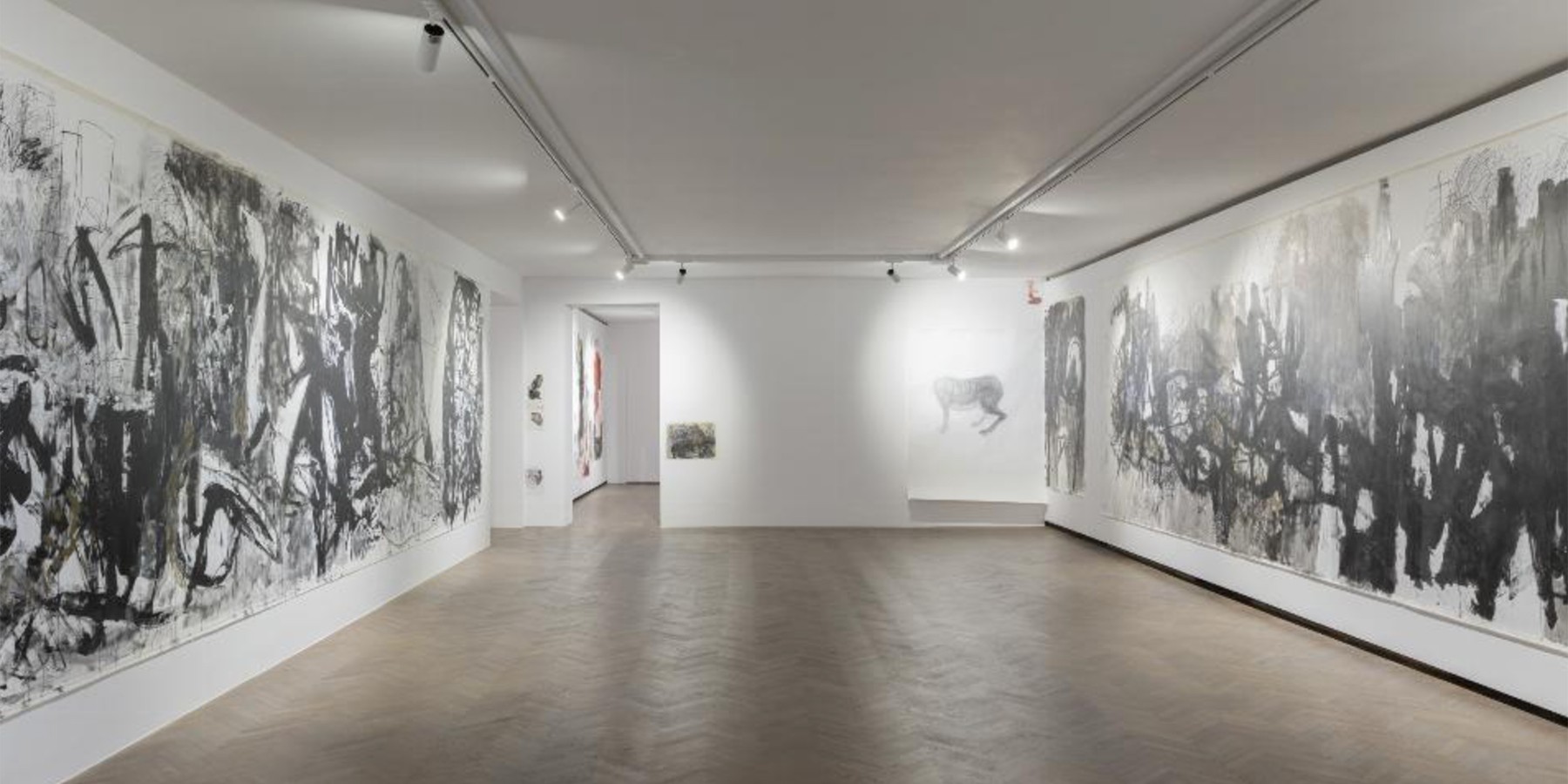
PLAN YOUR VISIT
Opening times:
Thuesday – Sunday
10:00-18:00
Last admission
to exhibition is at:
17.30
